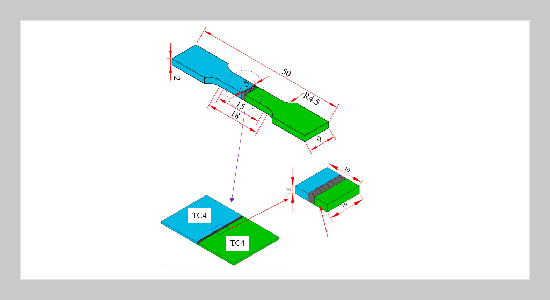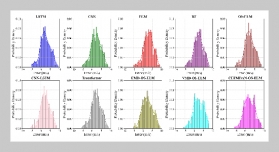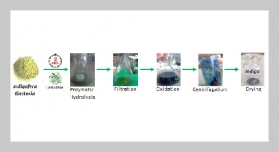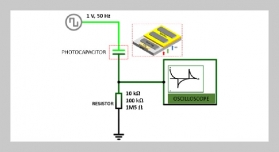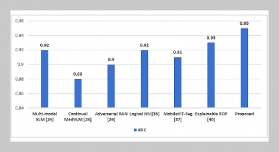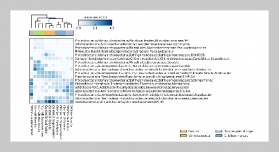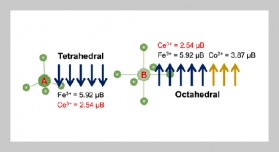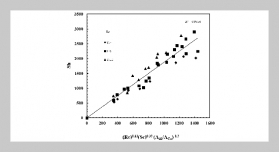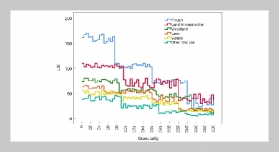- [1] M. Zakaria, R. Izamshah, M. Kasim, M. Hafiz, A. Ramli, et al., (2021) “Effect of Wire Electrical Discharge Turning Parameters on Surface Roughness of Titanium Alloy" Journal of Applied Science and Engineering 25(2): 267–274. DOI: 10.6180/jase.202204_25(2).0003.
- [2] G. Mou, X. Hua, D. Wu, Y. Huang, W. Lin, and P. Xu, (2019) “Microstructure and mechanical properties of cold metal transfer welding-brazing of titanium alloy (TC4) to stainless steel (304L) using V-shaped groove joints" Journal of Materials Processing Technology 266: 696–706. DOI: 10.1016/j.jmatprotec.2018.09.019.
- [3] A. Sadeghian and N. Iqbal, (2022) “A review on dissimilar laser welding of steel-copper, steel-aluminum, aluminum-copper, and steel-nickel for electric vehicle battery manufacturing" Optics & Laser Technology 146: 107595–. DOI: 10.1016/j.optlastec.2021.107595.
- [4] S. L. Canfield, J. S. Owens, and S. G. Zuccaro, (2021) “Zero Moment Control for Lead-Through Teach Programming and Process Monitoring of a Collaborative Welding Robot" Journal of Mechanisms and Robotics: Transactions of the ASME (3): 13. DOI: 10.1115/1.4050102.
- [5] X. Xie, W. Huang, J. Zhou, and J. Long, (2022) “Study on the molten pool behavior and porosity formation mechanism in dual-beam laser welding of aluminum alloy" Journal of Laser Applications 34(2): 022007–. DOI: 10.2351/7.0000630.
- [6] Z. He, D. Zhou, X. Du, T. Tao, X. Wang, H. Li, and J. Liu, (2022) “Hybrid joining mechanism of rivet plug oscillating laser welding for dual-phase steel and magnesium alloy" Journal of manufacturing processes (May): 77. DOI: 10.1016/j.jmapro.2022.03.053.
- [7] N. Chen, Z. Wan, H.-P. Wang, J. Li, B. Yang, J. Solomon, and B. Carlson, (2022) “Effect of ambient pressure on laser welding of AlSi10Mg fabricated by selected laser melting" Materials & Design 215: 110427. DOI: 10.1016/j.matdes.2022.110427.
- [8] C. Liu, H. Wang, Y. Huang, Y. Rong, J. Meng, G. Li, and G. Zhang, (2022) “Welding seam recognition and tracking for a novel mobile welding robot based on multilayer sensing strategy" Measurement Science & Technology (5): 33. DOI: 10.1088/1361-6501/ac3d06.
- [9] J. Long, L.-J. Zhang, J. Ning, Z.-X. Ma, and S.-L. Zang, (2021) “Zoning study on the fatigue crack propagation behaviors of a double-sided electron beam welded joint of TC4 titanium alloy with the thickness of 140 mm" International Journal of Fatigue 146: 106145. DOI: 10.1016/j.ijfatigue.2021.106145.
- [10] X. Gu and L. Zhang, (2022) “Laser lap welding of TC4 titanium alloy to 6082 aluminum alloy using a CoNiCuNb0.5V1.5 high entropy alloy filler" Materials Letters 312: 131562–. DOI: 10.1016/j.matlet.2021.131562.
- [11] Q. Cheng, N. Guo, D. Zhang, Y. Fu, S. Zhang, and J. He, (2021) “Study on interface and mechanical property of laser welding of NiTi shape memory alloy and 2A12 aluminum alloy joint with a TC4 wire" Smart Materials and Structures 31(1): 015032. DOI: 10.1088/1361-665X/ac3d71.
- [12] X. Hao, H. Dong, F. Yu, P. Li, and Z. Yang, (2021) “Arc welding of titanium alloy to stainless steel with Cu foil as interlayer and Ni-based alloy as filler metal" Journal of Materials Research and Technology 13: 48–60. DOI: 10.1016/j.jmrt.2021.04.054.
- [13] B. Wang, H. Peng, and Z. Chen, (2021) “Microstructure and mechanical properties of a laser welded Ti–6Al–4V titanium alloy/FeCoNiCrMn high entropy alloy with a Cu filler layer" Journal of Materials Research and Technology 12: 1970–1978. DOI: 10.1016/j.jmrt.2021.04.010.
- [14] N. Fang, E. Guo, K. Xu, R. Huang, Y. Ma, Y. Chen, Y. Yang, and J. Xie, (2021) “In-situ observation of grain growth and phase transformation in weld zone of Ti-6Al4V titanium alloy by laser welding with filler wire" Materials Research Express 8(5): 056507. DOI: 10.1088/ 2053-1591/abfc7b.
- [15] S. Wang, Y. Li, Y. Yang, S. M. Manladan, and Z. Luo, (2021) “Resistance element welding of 7075 aluminum alloy to Ti6Al4V titanium alloy" Journal of Manufacturing Processes 70: 300–306. DOI: 10.1016/j.jmapro.2021.08.047.
- [16] B. Wang, Q. Zhang, M. Wang, Y. Zheng, and X. Kong, (2021) “Comparison of surface integrity of Ti6Al4V titanium alloy manufactured by laser deposition and traditional method after end milling:" Proceedings of the Institution of Mechanical Engineers, Part C: Journal of Mechanical Engineering Science 235(19): 4097–4108. DOI: 10.1177/0954406220972135.
- [17] S. Zhang, Q. Zhang, M. Zheng, Y. Hu, S. Sui, J. Chen, and X. Lin, (2021) “Grain refinement and improved tensile properties of Ti5Al2Sn2Zr4Mo4Cr titanium alloy fabricated by laser solid forming" Materials Science & Engineering, A. Structural Materials: Properties, Misrostructure and Processing (800-): 800. DOI: 10.1016/j.jmapro.2020.12.00.
- [18] Z. Zhang, Y. Huang, R. Qin, W. Ren, and G. Wen, (2021) “XGBoost-based on-line prediction of seam tensile strength for Al-Li alloy in laser welding: Experiment study and modelling" Journal of Manufacturing Processes 64(May): 30–44. DOI: 10.1016/j.jmapro.2020.12.004.
- [19] A. A. Shanyavskiy and A. P. Soldatenkov, (2022) “Crack growth regularities and stress equivalent for in-service fatigued fan disk of titanium alloy Ti–6Al–3Mo–2Cr" International Journal of Fatigue (162-): 162. DOI: 10.1016/j.ijfatigue.2022.106956.
- [20] H. Shi, D. Liu, Y. Pan, W. Zhao, and W. Wang, (2021) “Effect of shot peening and vibration finishing on the fatigue behavior of TC17 titanium alloy at room and high temperature" International Journal of Fatigue (1–2): 106391. DOI: 10.1016/j.ijfatigue.2021.106391.
- [21] A. K. Syed, X. Zhang, A. Caballero, M. Shamir, and S. Williams, (2021) “Influence of deposition strategies on tensile and fatigue properties in a wire + arc additive manufactured Ti-6Al-4V" International Journal of Fatigue 149: 106268. DOI: 10.1016/j.ijfatigue.2021.106268.
- [22] J. Long, L. Zhang, L. Zhang, J. Wu, and M. Zhuang, (2022) “Comparison of fatigue performance of TC4 titanium alloy welded by electron beam welding and laser welding with filler wire" Fatigue & Fracture of Engineering Materials and Structures (4): 45. DOI: 10.1111/ffe.13644.
- [23] G. V. Ngo, (2020) “The Selection of Parameters for Automatic Welding of the Nuclear Reactors Pipelines" Materials Science Forum 989: 760–765. DOI: 10.4028/www.scientific.net/MSF.989.760.
- [24] S.-w. Cui, Y.-h. Shi, and C.-s. Zhang, (2021) “Microstructure and mechanical properties of TC4 titanium alloy K-TIG welded joints" Transactions of Nonferrous Metals Society of China 31(2): 416–425. DOI: 10.1016/S1003-6326(21)65506-1.
- [25] J. C. Michel and P. Suquet, (2016) “A model-reduction approach in micromechanics of materials preserving the variational structure of constitutive relations" Journal of the Mechanics & Physics of Solids 90(may): 254– 285. DOI: 10.1016/j.jmps.2016.02.005.
- [26] A. M. Aghdami and B. Davoodi, (2020) “An inverse analysis to identify the Johnson-Cook constitutive model parameters for cold wire drawing process" Mechanics and Industry 21(5): 527. DOI: 10.1051/meca/2020070.


